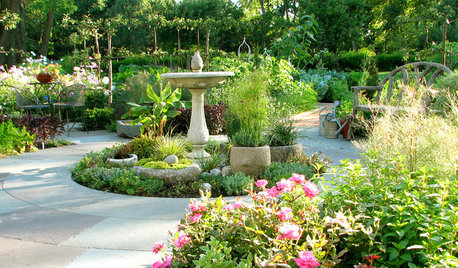Cleaning soil after removing toxic plants
jeff_12422
11 years ago
Related Stories

GARDENING GUIDESHow to Pick a Mulch — and Why Your Soil Wants It
There's more to topdressing than shredded wood. Learn about mulch types, costs and design considerations here
Full Story
GARDENING GUIDESHow to Stop Worrying and Start Loving Clay Soil
Clay has many more benefits than you might imagine
Full Story
GARDENING GUIDES10 Solutions for Soggy Soil
If a too-wet garden is raining on your parade, try these water-loving plants and other ideas for handling all of that H2O
Full Story
GARDENING GUIDESHouzz TV: Make a Worm Bin for Rich Soil and Happy Plants
A worm-powered compost bin that can fit under a sink turns food scraps into a powerful amendment for your garden. Here’s how to make one
Full Story
GARDENING GUIDESGet the Dirt on Your Garden’s Soil
Understand how your soil supports your plants so you can ensure your garden’s success
Full Story
GARDENING GUIDESGardening Solutions for Dry, Sandy Soils
Has your desert or beachy site withered your gardening creativity? Try these ideas for a beautiful, easy-care landscape
Full Story
GARDENING GUIDESThe Poop Scoop: Enrich Your Soil With Good Old Manure
Get over the ick factor already — this natural super-ingredient for soil has so many benefits, you'll wonder why you ever went chemical
Full Story
GARDENING GUIDESGardening Solutions for Heavy Clay Soils
What’s a gardener to do with soil that’s easily compacted and has poor drainage? Find out here
Full Story
GARDENING GUIDESAfter-Summer Care for a Fabulous Fall Garden
Cleaning out stragglers and taking time to assess will keep your garden thriving all through autumn
Full Story
HOMES AROUND THE WORLDThe Great Escape: Family Rebuilds After a Devastating Wildfire
Tim and Tammy Holmes survived the 2013 Tasmanian bushfires but lost their home. See how they’ve started over
Full Story





lazy_gardens
Tiffany, purpleinopp Z8b Opp, AL
Related Professionals
Ashburn Landscape Architects & Landscape Designers · La Marque Landscape Architects & Landscape Designers · North New Hyde Park Landscape Architects & Landscape Designers · Davis Landscape Contractors · Fuquay-Varina Landscape Contractors · Rockville Landscape Contractors · South Lyon Landscape Contractors · Vancouver Landscape Contractors · Tyngsboro Landscape Contractors · Lauderdale Lakes Landscape Contractors · Elkridge Decks, Patios & Outdoor Enclosures · Billerica Decks, Patios & Outdoor Enclosures · Conroe Decks, Patios & Outdoor Enclosures · Littleton Decks, Patios & Outdoor Enclosures · Woodstock Decks, Patios & Outdoor Enclosuresgardengal48 (PNW Z8/9)
Tiffany, purpleinopp Z8b Opp, AL
jolj
jeff_12422Original Author
toxcrusadr